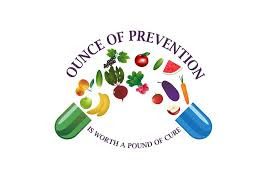I’m sure you’ve heard about the benefits of meditation, and probably had someone suggest you try it. Meditation is touted to help relieve stress, anxiety, and depression, as well as improve attention, memory, sleep, and energy. I’ve heard this mantra (cue “groan”) for years, but never really got into it myself. That is, until I heard about an easier way to meditate.
Right now, mostly because of COVID-19, our economy, and our political environment, the U.S. is experiencing one of the worst epidemics of mental illness ever recorded. More than 40% of Americans are experiencing symptoms of depression and/or anxiety. And this level is projected to persist beyond the pandemic.
One of the reasons for this is that depression and anxiety tend to feed on themselves. Anxious people think anxious thoughts. Depressed people tend to think negative thoughts, which perpetuates their negative feelings. This creates a downward spiral that can worsen and prolong their condition. I see this in my patients every day and have even experienced it myself. It’s very difficult to be positive or optimistic when your emotions lean towards gloom and doom.

That’s where meditation can come in – it gives your mind a rest. I tend to think of depression and anxiety as a form of “mental pain”. If you sprain your ankle, you have physical pain. You would (hopefully) rest your ankle to allow it to get better. Our minds are the same. Negative or stressful thoughts are akin to a physical beating your mind takes. If your mind is healthy, you can absorb these blows and move on. But if your mind is impaired, these thoughts can deepen the trauma. Meditation allows you to escape these thoughts and give you time to heal.
But most of us don’t feel we can commit to 20-30 minutes a day of meditation. It’s a hard habit to create. That’s where the concept of “micro-meditation” comes in; you incorporate small bits of meditation and mindfulness into your typical routine, resting your mind throughout your day. Rather than perseverating on your to-do list while brushing your teeth, you can pay attention to how the toothbrush feels, or notice the sound it makes. When you’re eating breakfast, focus intently on how the food tastes, and try to pick out individual flavors. In the shower, observe the color, shape, texture of the tiles, or listen closely to the sound of the water on your neck.
When you are at work, take a moment to feel your bottom against your chair and your feet on the ground. In bed, try to hear one sound in the distance, or note how the pillow feels on your head. And any time you feel stressed, you can rub your thumb and forefinger together and try to feel the ridges of your fingerprints.
Any of these exercises only takes a few moments, and really shouldn’t take any time out of your day; breaks of as little as 10-15 seconds at a time can make a difference. Each of them allows your mind to move into a more neutral mindset, taking it away from all the stressors and negative thoughts of the day.
There’s evidence to support this approach. Several recent studies on mindfulness showed a significant reduction in anxiety, depression, stress, and pain, and an overall improvement in perceived quality of life. Who wouldn’t want that?
It takes practice and persistence to observe and maintain the benefits from this technique, but it’s certainly achievable. And now, when our lives are typically less busy but more stressed, is a perfect time to start. So, I challenge you to give your suffering mind a rest. Take a moment to stop thinking about your stress and next task and start focusing about how your breakfast tastes.
Good luck, good health, and stay safe!

